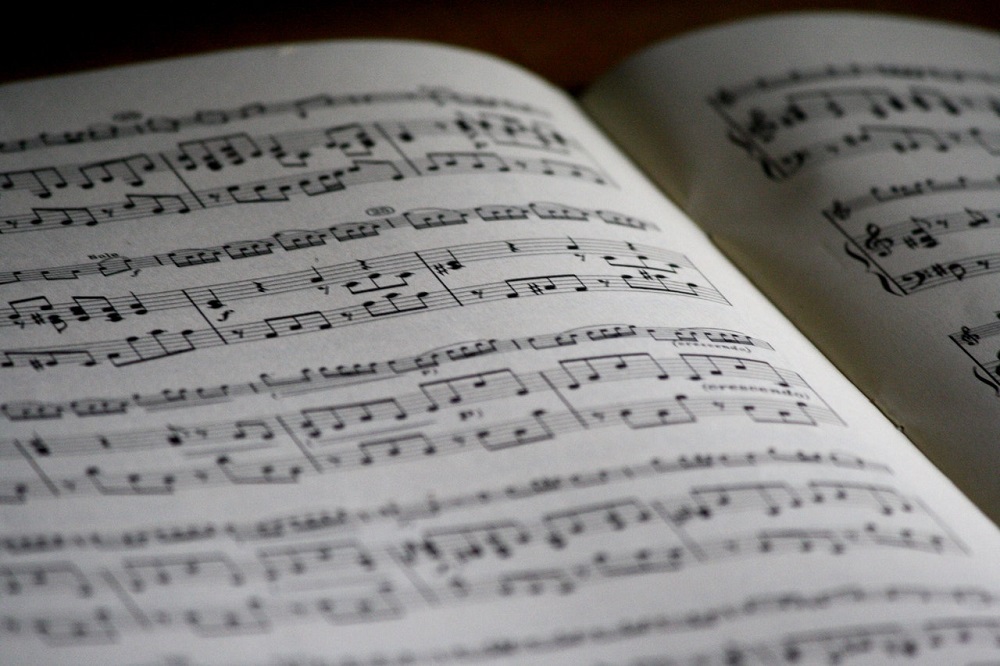Choosing the music for your film gives creators the chance to turn an ordinary movement into something remarkable. However, one of the big challenges for adding music to your story is that such music often has to paint a picture or add to emotion without lyrics. The intensity of sound, the pitch, and the instrumentation can all change the outcome of emotion in your film.

Keep Things Spare
When reviewing royalty free piano music, keep an ear out for simple melody lines. Too many chord progressions or a lot of sostenuto will make your score lush, but such lush sounds should be saved for more intense moments.
If you’re building an ear for the difference between dense and transparent music, listen to a wide variety of piano jazz, particularly that done by small combos. The percussive line of the piano is used to great effect by those players.
Be Subtle
Think about some of the film scores that define the movie. For example, the two notes of Jaws that indicate the shark is nearby really don’t tell us much. Of course, the title gives a lot away. However, all we know from that dark half-step in the cello and bass line is that there is something scary in the deep.
Cheery music is nice, but it can get a little saccharine if you use too much. Seek out recordings that offer more depth.
Use Rhythm
The rhythm of a piece of music can add a lot of intensity to your film. If you have seen Psycho, you know that the impact of scrapes and scratches on a violin, delivered with lots of rhythm, may convince you to take a bath instead.
Study Dance Music
Dancers tell their stories with movement over music. Your film has dialogue to tell your story, so your film score can be an
- accent to the state of mind of the character on film
- speed and action
- psychological and emotional connection
A simple line of melody can accompany a solo character as they walk alone down the street, or the same simple line can show a sense of loneliness as that character walks along a crowded street. Dance music, particularly ballet music of the twentieth century, does a great job of starting simply and leading to a percussive, robust finish.
Psychological unity in the audience will work to heighten the emotional response to your most intense moments. If you have ever watched E.T. and watched the whole crowd gasp when the bicycle flies, you know exactly how exciting that scene is, and it’s the music that creates the rush of hope from viewer to viewer.
Use Holds, Rests, and Silence
Once you have set a musical mood in your film, study recordings for the chance to use breaks in the music, holds over long notes, and the obvious cadence or end of a piece.
If you are working on a film that contains unreal situations, keep an ear out for recordings that feature moments of silence that you can use to create a sense of disconnection between the character and their reality.
Pay Attention to Copyright
Of course, you will make films that use only legal recordings. If you find a musician who will let you use their recordings in your film for a name credit, consider talking to a copyright or creative industry attorney to make sure that you have both have the protections in place to keep your movie rights safe.
Consider listing all musicians included in the film score. For example, you will need to list the composer as the creator of the music. Consider also giving credit to all the instrumentalists, the conductor, and any vocalists who work on your film. Being known as a filmmaker who is happy to offer credit could expand your pickings for your next film.
No matter the subject of your film or the story you’re trying to tell, music will be needed. If you have never gotten to see a silent film accompanied by a theatre organ, look for the chance to watch a live organist add to the intensity of the film. You will likely learn a lot about texture, color, and mood.

As the editor of the blog, She curate insightful content that sparks curiosity and fosters learning. With a passion for storytelling and a keen eye for detail, she strive to bring diverse perspectives and engaging narratives to readers, ensuring every piece informs, inspires, and enriches.









